How to Get Rid of Deeply Embedded Blackheads on Nose
- Paula's Choice
- Acne & breakouts
- Removing blackheads step-by-step
How to prevent and remove blackheads
Have you been battling with blackheads, those tiny black dots on your face? Here's how to remove blackheads and make sure they don't come back.
The original version of this article was reviewed in English by: Dr. Debra Jaliman, MD, USA

In this article
- What are blackheads?
- How do blackheads form?
- What is the difference between blackheads and spots?
- What is the difference between blackheads and whiteheads?
- What to do about blackheads?
- Extra tips to prevent blackheads
- What you shouldn't do
- Which Paula's Choice products should I use if I suffer from blackheads?
- Should I use a scrub?
- How to remove blackheads
What are blackheads?
Despite their appearance, blackheads aren't due to the skin being dirty. Blackheads (also known as open comedones) are a type of clogged pore. They can occur on their own or sometimes along with acne. Blackheads form when dead skin cells combine with excess sebum and dirt in the pore lining. Once this combination reaches the opening of the pore at the skin's surface, it oxidises, turning black. Blackheads tend to arise in your T-zone (forehead, nose and chin), particularly around the nose area as it has more hair follicles and produces more oil than other parts of the face.
To top
How do blackheads form?
Excess sebum production inside the skin's pores makes it difficult for the sebum to reach the surface of the skin resulting in blocked pores.
As the flow of oil clogs up, it mixes with accumulated dead skin cells that haven't exfoliated as efficiently as they should, narrowing the 'exit' of the pores so that the sebum cannot be secreted naturally.
If the pore is still slightly open, the combination of excess sebum and dead skin cells is exposed to oxygen, which oxidises the mixture and turns it black, forming a blackhead.
Excess sebum production can be caused by hormones, diet, ingredients in cosmetics products, medical conditions and medication.
To top
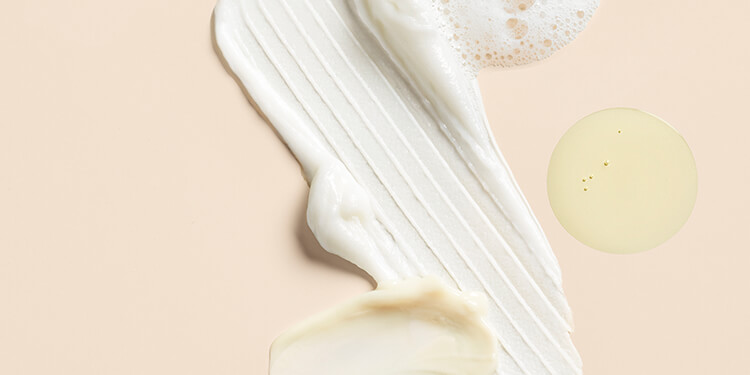
What is the difference between blackheads and spots?
Spots and blackheads are caused by clogged pores. This occurs when a hair follicle is clogged with sebum, dead skin cells and bacteria. Spots form when the hair follicle is completely sealed, blocking the sebum and dirt in the hair follicle from reaching the surface. As a result, the size of the spot may increase.
If the pore is clogged but not sealed, the sebum and dead skin cells in the pore can reach the skin's surface. When it comes in contact with air (oxidisation), the sebum turns black forming a blackhead.
To top
What is the difference between blackheads and whiteheads?
Blackheads are open comedones (clogged pores) which look like tiny black dots. These black dots are essentially blocked sebum that has become oxidized, causing it to turn black.
Whiteheads are closed comedones, referred to as such because they're covered (closed) with a thin layer of skin. Because of this skin covering, the sebum cannot reach the surface which causes its flesh-toned, bumpy appearance.
To top
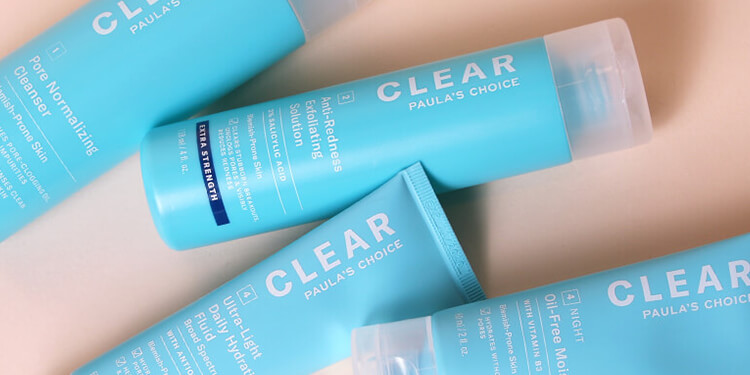
What to do about blackheads?
Prevention is the best cure when it comes to blackheads. Following a simple 3-step skincare routine will help keep skin healthy and prevent blackheads from forming.
- Cleanse: Use a water-soluble, mild cleanser to remove pore-clogging dirt, makeup and oil from the skin's surface.
- Exfoliate: Follow with a well-formulated BHA exfoliant. Exfoliants with salicylic acid (BHA) ensure that dead skin cells are removed and penetrate deep into the pores, preventing pores from becoming clogged.
- Hydrate: Finish with a well-formulated day cream (with a minimum of SPF 30) and night cream that suit your skin type. Keeping skin balanced helps prevent excess sebum production.
To top
Extra tips to prevent blackheads
- Use skincare products with a liquid texture or in gel form where possible. Rich creams and lotions often contain pore-clogging ingredients.
- Avoid skin irritants. Many skincare products can stimulate sebum production and make blackheads worse. This is due to ingredients that irritate the skin, such as alcohol, peppermint, menthol, lemon, lime and eucalyptus. Avoid using products with these ingredients and never use soap bars to wash skin - they will clog your pores and irritate or dry out your skin.
- Remove excess sebum. Use a clay mask regularly to absorb sebum, particularly on the oilier parts of your face.
- Visit the beautician. They will safely and hygienically remove your blackheads and then your home-care products can help minimise their formation.
To top
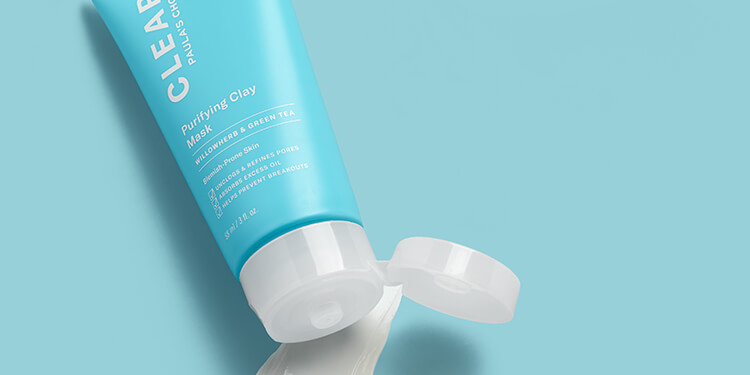
What you shouldn't do
If you're looking for a safe way to remove blackheads, be careful with what you see on the internet - some of the advice can actually make the problem worse. You should never do these things:
- Squeezing spots and blackheads: when you squeeze spots and blackheads, you can actually damage your skin. Sometimes this damage is permanent, causing 'squeezing' scars. Not to mention the bacteria on your hands. When this comes into contact with your skin, it can make spots and blackheads a lot worse.
- Removing blackheads with a needle: many websites recommend using a needle (sometimes in combination with a comedone extractor), but this can cause serious (and permanent) damage to your skin. Furthermore, a needle can cause additional problems if it is not sterile. Always visit a beautician or dermatologist who will safely remove your blackheads.
To top
Which Paula's Choice products should I use if I suffer from blackheads?
Whatever skin issues you have: there is no single product that can solve them for you. It is important to have a good routine to keep skin clean and healthy. Once you've got the basics you can then add in products that are aimed at reducing and preventing spots and blackheads.
The basics:
- Facial cleanser: choose a mild facial cleanser that suits your skin type. A gentle cleanser will remove excess oil that can clog pores, plus clean skin absorbs other products better.
- Exfoliant: a BHA exfoliant contains salicylic acid. Salicylic acid removes dead skin cells and also cleans pores inside. This helps to reduce existing blackheads and to prevent new ones
- Day and night cream: a good day and night cream will hydrate skin and supply vital ingredients all skin needs to be healthy. Always use a day cream with SPF 30 to protect against sun damage as the sun can aggravate spots and inflammation.
Blackhead-reducing products that you can add to your routine:
- Toner: use a toner with niacinamide helps improve the structure of pores.
- Mask: use a mask regularly to help absorb excess sebum and clean and visibly reduce pores. Both our Skin Balancing Mask and our Pore Clarifying Charcoal Gel Mask are ideal if you suffer from blackheads.
- Skin Balancing Serum: our Skin Balancing Serum keeps skin balanced, helping to prevent blackheads and visibly reduce pores.
- Defense Antioxidant Pore Purifier: Defense Antioxidant Pore Purifier penetrates into the pores and contains a mix of effective antioxidants specially formulated to combat the damage caused by pollution and blue light exposure.
To top
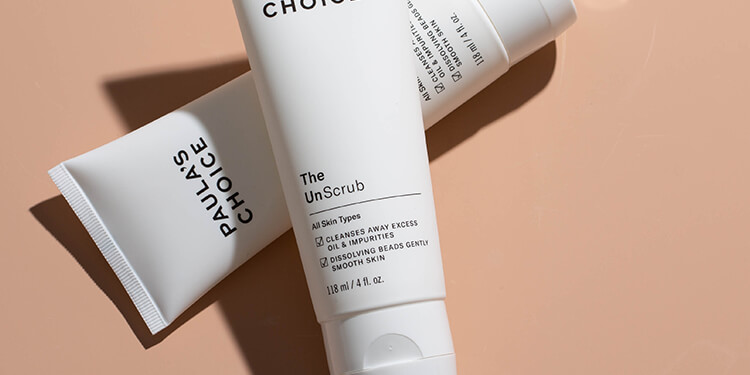
Should I use a scrub?
Scrubbing is never a good idea. The vast majority of scrubs contain hard, coarse particles that can damage your skin. This can lead to irritation and increased sebum production, which in turn can lead to more spots and blackheads. In addition, blackheads are too deep in the pore to be able to remove them with a scrub. If you do use a scrub, you will only remove the upper part of the blackhead and not the underlying cause. Instead of a scrub you can use an bha-salicylic acid. BHA exfoliants remove dead skin cells without damaging the skin and can penetrate into the pores. Still want to scrub? Then try The UnScrub . This mild cleansing scrub removes makeup, SPF and dirt, but unlike other scrubs, it contains no hard, coarse particles – just fine, flexible jojoba balls. They dissolve slowly so won't damage your skin.
To top
How to remove blackheads
- Wash your face with a mild, water-soluble cleanser and then use a toner containing niacinamide that will help improve the shape of your pores.
- Place a warm (not hot), damp facecloth on the areas of your face where you want to remove the blackheads for two to three minutes. Then gently pat the skin dry.
- Use a comedone spoon. Place it over the blackhead, then gently apply downward pressure while pushing the spoon forwards.
- Remove more of the blackhead by putting a tissue over your finger top and gently and evenly pushing down against the side of the blackhead.
- Only do this once. If it does not work, then it means the blackhead cannot yet be removed. Don't force it: if you do you risk wounding you skin and a creating a scab, which can lead to scar tissue. Try again in a few days.
- Finish your treatment with a good exfoliant containing BHA (salicylic acid) and apply a product with sunscreen during the day to protect your skin from UV rays.
Make sure you never squeeze, push or scrape your skin too hard.
To top
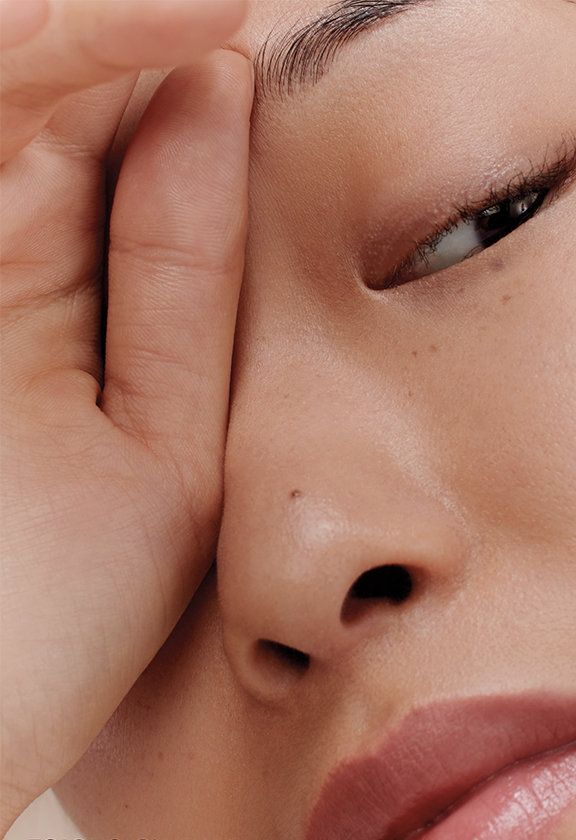
Want to learn how to get rid of blackheads for good?
Sign up for our 3 day course on banishing blackheads and learn how to get beautiful, blackhead-free skin in just a few minutes a day.
Customer Service
Need help with finding the right product for you skin? Our customer care team are skincare and product experts and can guide you to the best skin of your life.
Newsletter
Sign up for our newsletter to receive exclusive offers and expert skincare advice
How to Get Rid of Deeply Embedded Blackheads on Nose
Source: https://www.paulaschoice-eu.com/removing-blackheads